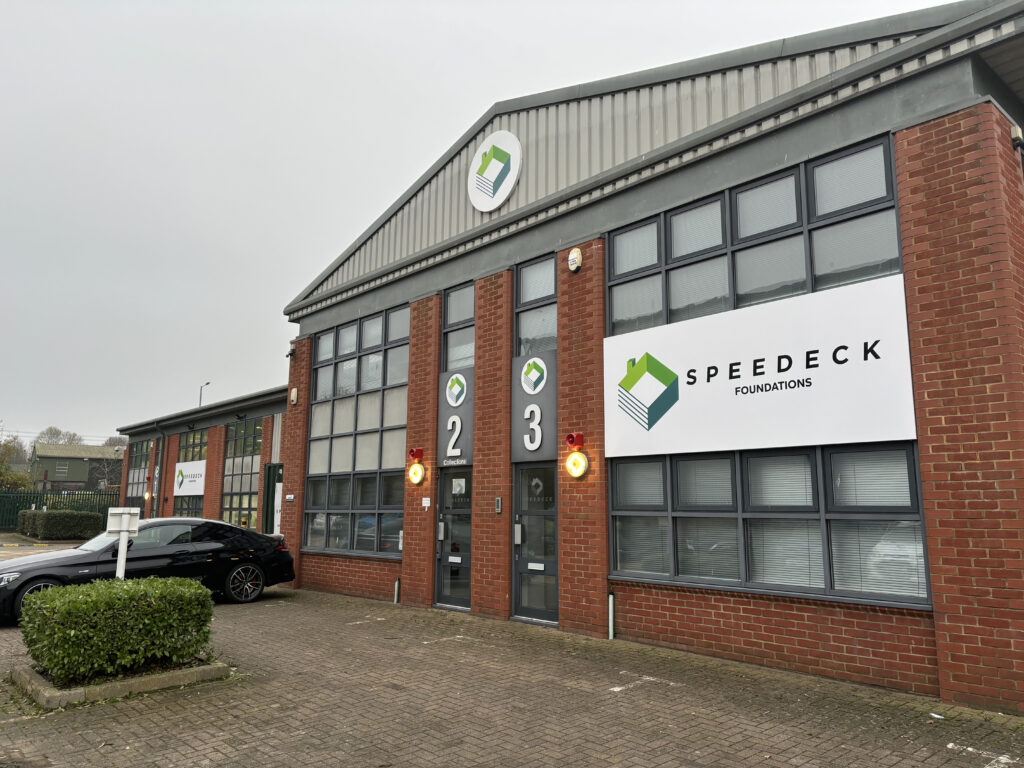Engineered foundation solutions are advanced designed structural systems that support buildings in various soil conditions and construction environments.
These solutions are tailored to a project’s specific needs, ensuring stability, cost efficiency, and adherence to safety standards whilst compliant with the latest British and Eurocode standards. Engineered foundations often incorporate specialised ground engineering techniques such as piling and reinforced concrete derived from geotechnical & structural engineering to optimise the construction process and outcome.
What Are Engineered Foundation Solutions?
Engineered foundation solutions involve customised approaches to constructing Geo-structural foundations. These solutions consider factors such as soil composition, load-bearing requirements, environmental conditions, and construction timelines. Key components of engineered foundation solutions include:
- Piled Raft Foundations: This method combines piles and a reinforced concrete slab to distribute the load efficiently, providing enhanced stability whilst reducing the amount of excavation required.
- Concrete Working Platforms: These platforms are cast in-situ and remain throughout the substructure works, they eliminate the need for temporary granular piling mats, facilitating a cleaner and safer construction site, with the added benefit of reducing carbon emissions associated with installation, movement, and removal of temporary piling mats.
- Reinforced Concrete Slabs: Designed using advanced finite analysis tools, these slabs ensure optimal reinforcement and adaptability to accommodate various structural demands.

Top Three Advantages
The best-engineered foundation solution depends on the specific requirements of a project. However, piled raft foundations are often highlighted as a superior choice due to their advantages:
- Enhanced Load-Bearing Capacity: Piled rafts support structures with fewer foundation elements, making them ideal for demanding conditions.
- Cost Efficiency: Piled raft foundations lower overall construction costs and risks while maintaining structural integrity by reducing the number of components and specialist trades and reducing the extensive excavation and muck away.
- Flexibility and Stability: These foundations adapt to various soil types and building weights, providing robust support and minimising settlement issues.
When to Use Engineered Foundation Solutions
Engineered foundation solutions should be considered in specific scenarios to ensure construction projects’ stability, safety, efficiency, and cost-effectiveness. Here’s a detailed explanation for each bullet point:
- Challenging Soil Conditions: In areas where the soil is highly variable, weak, or prone to shrinking/swelling, traditional foundations like shallow footings or strip foundations may not provide sufficient stability. Engineered solutions like piled rafts are designed to handle these complexities. Piled rafts combine piles and raft foundations, distributing the building load more evenly across a larger area and providing additional support deep within the ground. This mitigates risks associated with soil settlement and movement, ensuring a stable foundation for the structure.
- Reduced Construction Timelines: Engineered foundations can expedite the construction process in projects with time constraints, such as commercial developments or residential projects with strict deadlines. Concrete blinding minimises site preparation time by avoiding installing a costly granular piling mat, reducing the number of components and specialist trades that need to be brought in.
- Cost-Sensitive Construction: Cost-effective solutions are essential in projects with tight budgets. Engineered foundations can offer substantial cost savings by optimising the design and use of materials. For example, our in-house designers and engineers can precisely calculate the required foundation dimensions and materials, avoiding over-engineering and reducing material costs. Additionally, efficient construction techniques can lower labour and equipment expenses. These savings are achieved without compromising the structural integrity or quality of the foundation, making it an attractive option for budget-conscious projects.
- Reduced Health and Safety Risks: The need for extensive excavation and deep trenches for ground beams is minimised with piled raft foundations. Less excavation reduces the risk of cave-ins or accidental falls into deep trenches, which are common safety concerns on sites using pile and ground beam methods. Shallow excavations for a piled raft foundation mean a more stable and safer working environment. A piled raft system consolidates many aspects of foundation construction into a single process. In contrast, pile and ground beam foundations often require multiple trades working simultaneously (e.g., excavation, piling, and concrete placement), increasing the risk of accidents due to miscommunication, poor coordination, or overlapping work zones. A simplified foundation system with fewer trade interfaces means fewer opportunities for injury.

The Efficient Solution
In summary, engineered foundation solutions are the ideal solution in scenarios involving challenging geological conditions, large structures, time-sensitive projects, and cost-sensitive projects. Compared to traditional foundation methods, they provide enhanced stability, safety, efficiency, and cost-effectiveness, making them a smart choice for modern construction challenges.






